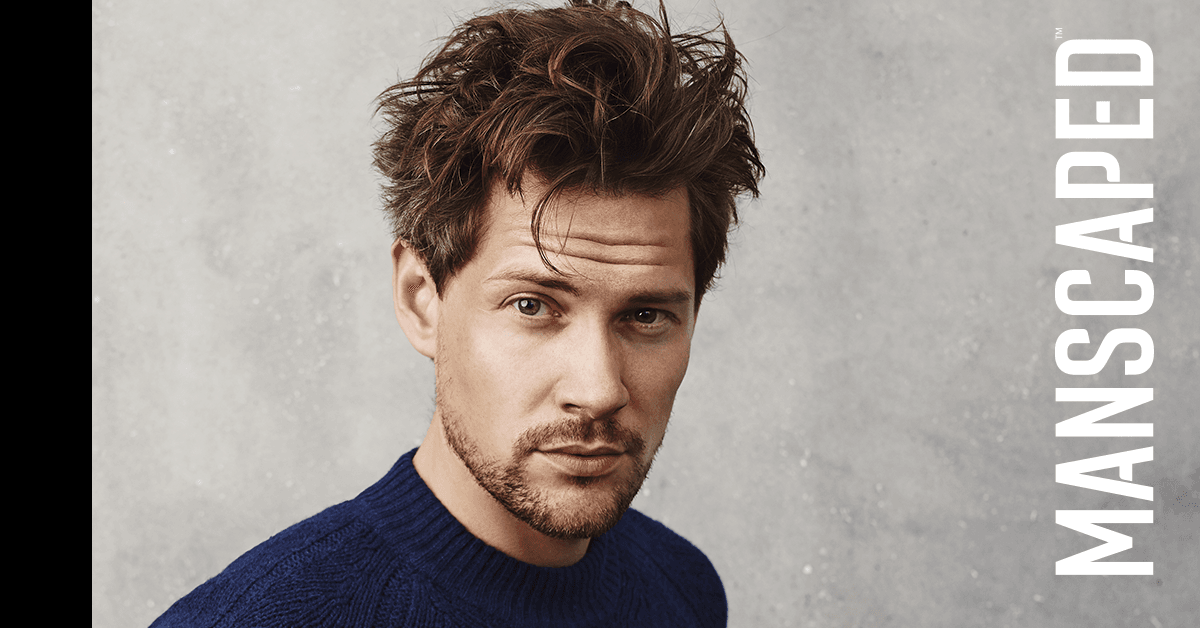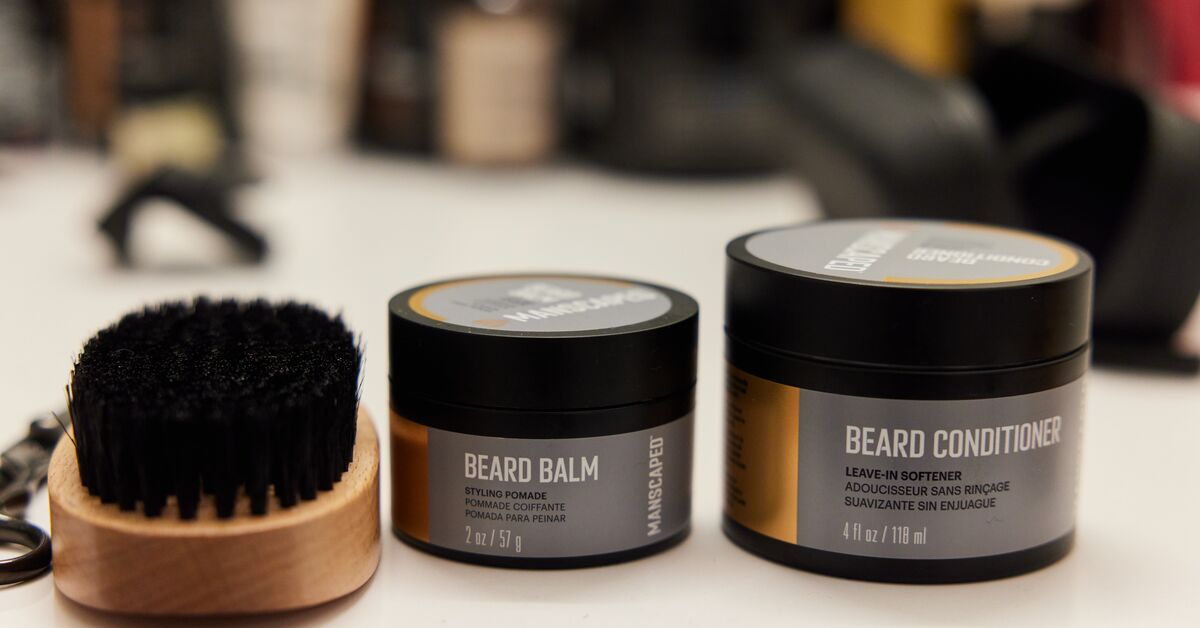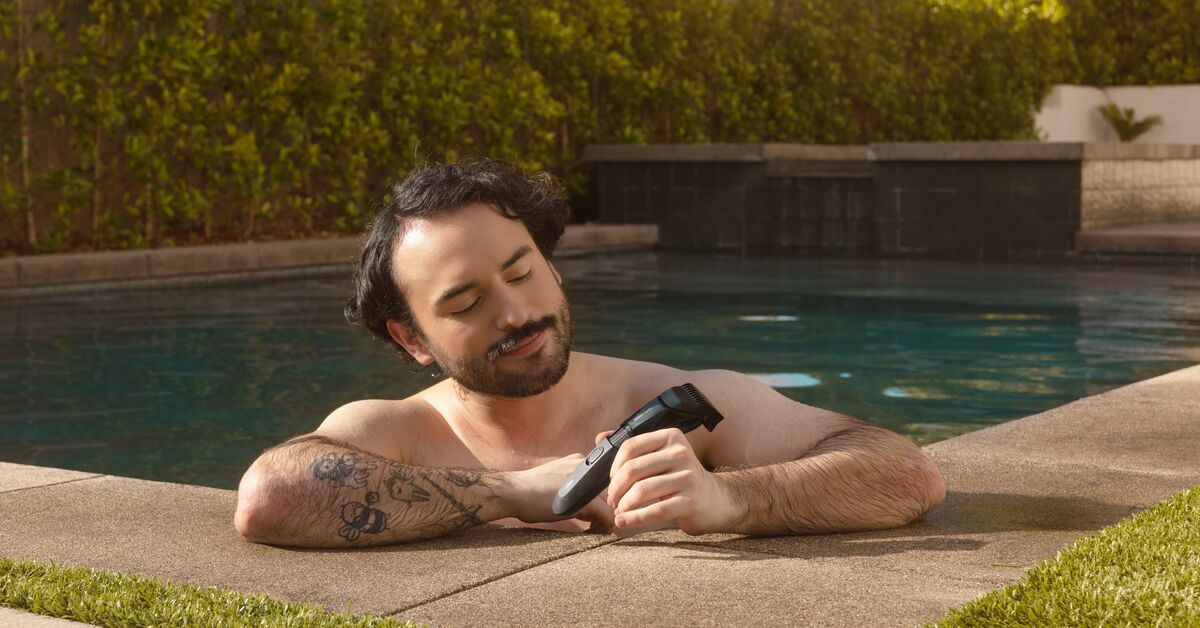
Your hair is having a bit of a day, huh?
We can help with that.
When hair gets frizzy and untamable, it can be frustrating, but there are solutions. It turns out that the best offense is a good defense in this case. Let’s take a few minutes to learn about frizzy hair, what causes it, and what you can do about it.
Wash it right.
Taming frizzy hair starts in the shower. That probably doesn’t come as a surprise, but there are a few things you need to know about showering when it comes to frizzy hair.
First and foremost, turn down the temperature of the water. If possible, take cool or lukewarm showers. No, you don’t have to get on the ice-cold shower train. This isn’t a how-to-grind self-help YouTube video.
It’s just that hot water contributes to frizziness. So, to the extent that you can stand it, turn down the water temperature when you shower. If that’s too much, then turn down the temp just when you wash your hair and try to keep your hair out of the water stream when the water is hot. It’ll help.
Beyond that, there are still more things you need to know about showering, so let’s break it down.
How often?
Showering too much can contribute to frizziness. So can showering too rarely. It’s a fine balance to strike.
This all boils down to hair type (which is why not everyone needs the same shower schedule). We’ll get into hair type a little more later, but for this part, you need to consider two types: dry and oily.
If your hair is dry, then showering too much will make it even dryer, and that can fry your already frizzy hair. No bueno.
If your hair is oily, then showering too infrequently can exacerbate the buildup of oil, and you get frizziness.
If you’re not sure where to start, try showering every other day. If your hair feels dry, shower less. If your hair feels oily, you might need to shower a little more.
And let’s all keep one thing in mind. We’re talking about hair today. If you have a staunch workout routine and need an extra shower in the week, take it. Just try to spare your hair extra time in the water to the extent that you can. (Frizzy hair is better than B.O. any day of the week.)

Which products?
Since we’re talking about showering, it makes sense to cover shampoos and conditioners.
First, you should condition your hair every time you wash it. Shampoos are designed to cut through oils in your hair, and that's important. But the process can dry out your hair, and for some of you, that means wild, untamable hair. So always condition after you wash.
What about shampoos?
Whether you have oily or dry hair, you want a hydrating shampoo. There are a few reasons for this, starting with the fact that hydrating shampoos are good for your scalp and general hair health.
There’s also the fact that showering dries out hair by default. Odds are you use tap water when you shower, and it has things in it that dry out your hair (primarily calcium, but also a little bit of chlorine). So you need to hydrate when you shower.
Considering all of this, there is an ideal choice for your shampoo. Since you want to condition every time you wash, a two-in-one formula is probably a smart move. And when it comes to hydration for your head, natural ingredients tend to work the best. Put it together, and our 2-in-1 Shampoo + Conditioner is a clear winner.
How to dry it.
The last lesson for showering has to do with when you turn the water off. You’ll want to dry your hair (normally), but this can lead you to a few bad ideas. If your hair is long enough, you might consider blow-drying it. Blow dryers are basically frizziness infusers. You’re pouring gas on a fire with this decision.
Even if you don’t blow dry, it’s easy to add to the frizziness just by using a towel. If you get out of the shower and vigorously rub down your head with your towel, that’s also going to add to your problem. The friction can damage your hair, create static, and otherwise infrizzinate your scalp.
Your best option is air drying. If your hair is dripping wet, you can pat it dry or put a towel on your head for a few minutes to catch the water. After that, style it and let it air dry. You’ll see an immediate improvement.

Style it like a pro.
Moving on from showers, let’s talk about styling your hair. Clearly, this is the part where you actively tame the frizz, but there are so many different hairstyles that it can’t all be consolidated. Instead, we want to highlight one simple thing that can help just about any guy style frizzy hair.
If you’re going to use a product, make sure it doesn’t have alcohol in it. Alcohol-based gels are common because they set quickly and are easy to use, but they fry the hair. An alcohol-free gel or touch-up creme is what you want.
If you want to try any other formula on your head, do it scientifically. See if things are better or worse after you start with the new product. That should help you avoid accidental issues.
Consider your hair type.
Okay. We’ve talked a lot about hair care and how to apply that to taming frizz. Now, we’re going to go a little deeper into hair types. We’re going to look at four categories: thick, thin, oily, and dry. We’ve covered some aspects of oily and dry hair, but there’s still more to get into. So let’s take a deep dive and learn some important things.
Thick hair.
If you have a thick mane, then that’s going to influence how you care for your hair. Obviously, you’ll need heavier products that can penetrate the jungle and do their thing. Except heavier products can also hit harder, which means that you might want to scale things back a bit.
Here’s what we mean. If you're using heavy styling or haircare products, keep an eye on how your hair responds and be ready to give your hair rest days if needed.
That said, if you aren't using heavy products with your thick hair, you might have to increase some frequencies and uses in order to compensate. The major struggle with thick hair is that it’s easy for it to be dry on the surface and less dry deeper down. That means you have to stay diligent when you wash, style, or treat your hair.
The good news is that if you keep your thick hair healthy, the weight of the hair can help combat frizziness.
Thin hair.

For thin hair, you’ll need the opposite of everything above. You need lighter products with a lighter application. Thin hair is easily damaged, easily dried, and easily frizzed. Once again, pay attention to how your hair responds to any products. The one thing that thin hair has in common with thick hair is that both types need rest. If you’re perpetually frizzy, take a day off from the products (maybe not a work day or a date night).
Once you find products and a schedule that works, your thin hair will be less frizzy, but you’ll still have to worry about changes in the weather (Wind, humidity, and dryness can all set your hair off.) and other environmental impacts.
Oily hair.
Let’s double back to oily hair. When oily hair gets frizzy, it’s usually extra curly. The oils in your hair can help your hair form the bonds that cause it to curl, so as your hair gets oilier, it can actually get frizzier.
At the same time, oil does add weight to your hair, which can counter some of the frizziness.
The end result is that the oils in your hair can either mitigate or exacerbate frizziness, depending on how much oil is up there. If you really want to experiment, you can stop using any products (including shampoo and conditioner) for a couple of weeks. You’ll see that things get frizzier and less frizzy at different points in the experiment. For most people, it starts out less frizzy, suddenly spikes in frizziness, and then levels off as the oils continue to build up.
All of this is to say that using shampoo strategically to control oil levels is everything. Shampoo too much and your hair will dry out and frizz. Shampoo too little and the oils will curl your hair into oblivion. You just have to find that ideal schedule.
Dry hair.
With dry hair, dryness is the name of the game (shockingly). Since this type of hair naturally has less oil in it, it’s susceptible to dehydration, which damages hair and causes frizziness. If you don’t have curly hair, your frizziness is most likely due to dryness.
Obviously, conditioners (and even leave-in conditioners) are your friend, but with dry hair, how you treat it is extra important. It’s more important with this hair type to avoid blow dryers, turn down the heat in the shower, and avoid vigorous toweling.
Hopefully, these tips will help tame the frizz and level up your mane game.
04.20.23
Share

Featured Articles
- Your Favorite Ball Deodorant. Now with a New Scent: Perservere.MANSCAPED® + TCS for Testicular Cancer Awareness MonthIntroducing The Lawn Mower® 5.0 Ultra TCS Special Edition and TCS Ball Hero BundleThe Dome Shaver™ Pro vs. The Dome Shaver™ Plus: Which Should You Choose?The Chairman™ Pro vs. The Chairman™ Plus: Which Should You Choose?



